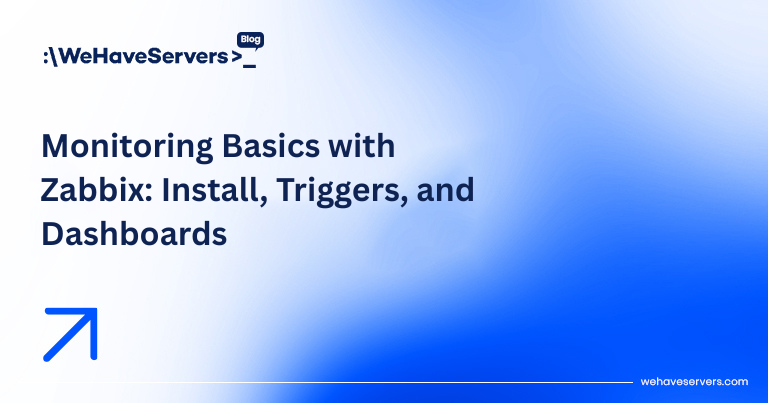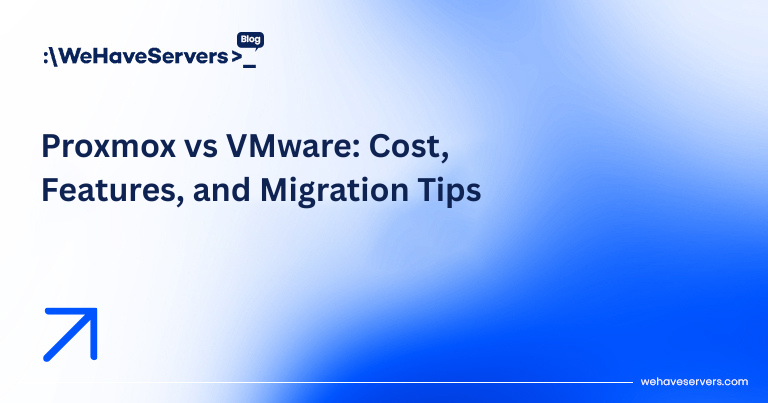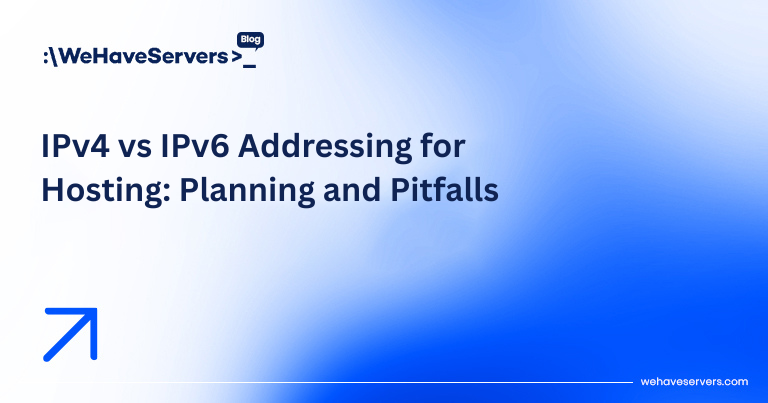
Monitoring Basics with Zabbix: Install, Triggers, and Dashboards
Monitoring Basics with Zabbix: Install, Triggers, and Dashboards
When running production infrastructure, monitoring is non-negotiable. Whether it’s a VPS fleet, a cluster of dedicated servers, or a hybrid setup across colocation and cloud, you need visibility into uptime, performance, and security. Zabbix, a mature open-source monitoring platform, remains one of the most widely used solutions in 2025. Unlike lightweight tools that only show graphs, Zabbix delivers metrics, alerts, triggers, and dashboards with enterprise-level flexibility.
This guide provides a complete introduction to Zabbix monitoring: installation, agent deployment, trigger configuration, and dashboard customization. By the end, you’ll be able to deploy a working Zabbix setup for real-world production monitoring.
🔹 Step 1: Install Zabbix Server
Zabbix requires three components: server, database, and frontend.
On Ubuntu/Debian
wget https://repo.zabbix.com/zabbix/7.0/ubuntu/pool/main/z/zabbix-release/zabbix-release_7.0-1+ubuntu22.04_all.deb
sudo dpkg -i zabbix-release_7.0-1+ubuntu22.04_all.deb
sudo apt update
sudo apt install zabbix-server-mysql zabbix-frontend-php zabbix-apache-conf zabbix-sql-scripts zabbix-agent -y
On RHEL/CentOS
sudo rpm -ivh https://repo.zabbix.com/zabbix/7.0/rhel/9/x86_64/zabbix-release-7.0-1.el9.noarch.rpm
sudo dnf clean all
sudo dnf install zabbix-server-mysql zabbix-web-mysql zabbix-apache-conf zabbix-sql-scripts zabbix-agent -y
🔹 Step 2: Configure Database
Zabbix supports MySQL/MariaDB and PostgreSQL. Example with MariaDB:
sudo mysql -uroot -p
CREATE DATABASE zabbix CHARACTER SET utf8mb4 COLLATE utf8mb4_bin;
CREATE USER 'zabbix'@'localhost' IDENTIFIED BY 'StrongPassword!';
GRANT ALL PRIVILEGES ON zabbix.* TO 'zabbix'@'localhost';
FLUSH PRIVILEGES;
Import schema:
zcat /usr/share/zabbix-sql-scripts/mysql/server.sql.gz | mysql -uzabbix -p zabbix
Edit /etc/zabbix/zabbix_server.conf:
DBPassword=StrongPassword!
🔹 Step 3: Start Zabbix Services
sudo systemctl restart zabbix-server zabbix-agent apache2
sudo systemctl enable zabbix-server zabbix-agent apache2
Access frontend: http://your-server-ip/zabbix
Default login: Admin / zabbix
🔹 Step 4: Deploy Zabbix Agent
The agent collects metrics like CPU, RAM, disk, and sends them to the Zabbix server.
# On monitored host
sudo apt install zabbix-agent -y
# Edit config
/etc/zabbix/zabbix_agentd.conf
Server=192.168.1.100 # Zabbix server IP
Hostname=web01
Start agent:
sudo systemctl restart zabbix-agent
sudo systemctl enable zabbix-agent
🔹 Step 5: Configure Hosts
In Zabbix frontend:
- Navigate to Configuration → Hosts
- Add a new host:
web01 - Assign group:
Linux servers - Link template:
Linux by Zabbix agent
Once added, metrics should populate within 1–2 minutes.
🔹 Step 6: Triggers
Triggers define conditions that raise alerts.
{web01:system.cpu.load[percpu,avg1].last()}>5
This fires when CPU load per core exceeds 5.
Common triggers:
- Disk usage > 90%
- Memory usage > 80%
- Service down (HTTP, MySQL, Nginx)
- Network latency > 200ms
Set severity (Warning, High, Disaster) and recovery expressions.
🔹 Step 7: Notifications
Connect Zabbix to alerting systems:
- Email (SMTP)
- Slack/Discord/Telegram via media scripts
- PagerDuty or OpsGenie
Example Telegram script uses API tokens to deliver real-time alerts.
🔹 Step 8: Dashboards
Zabbix 7.0+ features modern dashboards:
- Widgets for CPU, memory, disk, network
- Graphs with historical data
- Maps to visualize server clusters
- SLA widgets for uptime reporting
Create a dashboard for each environment (staging, prod) with SLA-based views.
🔹 Step 9: Advanced Features
- Proxies – scale monitoring across remote data centers.
- Auto-discovery – automatically add hosts via IP ranges.
- API – integrate Zabbix with provisioning tools (Ansible, Terraform).
- Encryption – use TLS PSK or certificates for agent communication.
✅ Conclusion
Zabbix remains one of the most powerful monitoring solutions in 2025. With proper deployment — agents, triggers, dashboards, and notifications — you gain full visibility into infrastructure health. Whether monitoring a single VPS or a dedicated cluster across multiple regions, Zabbix ensures proactive alerts, SLA compliance, and reliable reporting. At WeHaveServers.com, we rely on Zabbix to provide clients with transparent uptime dashboards and real-time infrastructure monitoring.
❓ FAQ
Is Zabbix better than Prometheus?
Zabbix is stronger for IT infrastructure monitoring (agents, SNMP, uptime), while Prometheus excels at cloud-native metrics and microservices. Many companies use both.
How many servers can Zabbix monitor?
With proxies and database tuning, Zabbix can scale to tens of thousands of monitored hosts.
Can I run Zabbix on a VPS?
Yes. A 2 vCPU / 4GB RAM VPS can monitor dozens of servers. For 500+ hosts, use a dedicated server.
Does Zabbix support Docker/Kubernetes?
Yes, via agent2 with container metrics, or by scraping cAdvisor/Prometheus exporters.
How do I secure Zabbix?
Enable TLS encryption for agent traffic, enforce HTTPS for the frontend, and limit admin access via VPN or firewall.



